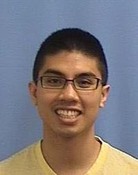Program Information
Joint Image Domain Motion-Estimation and Motion-Compensation for 4D Cone Beam Computed Tomography Image Reconstruction
R Pham1*, W Rao2 , P Kandlakunta3 , M Anastasio4 , T Zhang5 , (1) Washington University in St. Louis, St. Louis, MO, (2) Washington University in St. Louis, St. Louis, MO, (3) Washington University School of Medicine, St. Louis, MO, (4) Washington University in St. Louis, Saint Louis, MO, (5) Washington University School of Medicine, St. Louis, MO
Presentations
TH-AB-601-7 (Thursday, August 3, 2017) 7:30 AM - 9:30 AM Room: 601
Purpose: Respiratory motion causes artifacts in CBCT images due to the slow gantry rotation in image acquisition. 4D-CBCT images based on phase binning exhibit severe striking artifacts due to limited projection angles in each single phase. In this study, a novel 4D-CBCT reconstruction method was developed to mitigate motion artifacts without prior information of patient’s respiratory motion.
Methods: The proposed 4D-CBCT reconstruction method consists of the following steps: 1) initial rough reconstruction using the iterative few-view FISTA reconstruction algorithm, 2) deformation vector field (DVF) estimation for each phase using deformable image registration, 3) the analytic motion-compensated FDK (mcFDK) is applied for the final reconstruction. Though few-view reconstruction images are blurred, they are sufficient for DVF estimation. A digital human XCAT 4D motion phantom was used to generate projection data. The final results from mcFDK were evaluated against the results from the standard FDK and the respiration-correlated FDK (rcFDK) methods.
Results: The initial few-view FISTA reconstruction avoids streak artifacts compared to rcFDK, and allows reasonably accurate DVF estimation in the image domain. Calculated DVFs were applied in mcFDK for image reconstruction at any breathing phase. Motion blurring was significantly reduced and image quality was improved in the final results.
Conclusion: The proposed method can reconstruct 4D-CBCT without prior image and motion information and produce results free of significant motion blurring. The image quality is superior to that of FDK and rcFDK.
Funding Support, Disclosures, and Conflict of Interest: This research was made possible by Grant Number T32EB014855 from the National Institute of Biomedical Imaging and Bioengineering, National Institutes of Health. The content is soley the responsibility of the authors and does not necessarily represent the official views of the NIH.
Contact Email:
